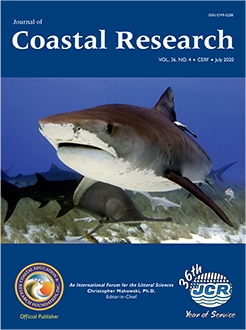Finkl, C.W. and Makowski, C., 2020. Coastal Belt Linked Classification (CBLC): A system for characterizing the interface between land and sea based on large marine ecosystems, coastal ecological sequences, and terrestrial ecoregions. Journal of Coastal Research, 36(4), 677–693. Coconut Creek (Florida), ISSN 0749-0208.
The Coastal Belt Linked Classification (CBLC) is a novel approach based on interpretation of satellite images and assimilation of collateral data to characterize coastal belt segments that function as discrete interfaces between land and sea. This method is based on the formulation of concepts derived from the Biophysical Cross-shore Classification System (BCCS), the worldwide and regional-scale Large Marine Ecosystems (LME) classification, and the global distribution of terrestrial Ecoregions (ER). The coastal belt, a zone that extends across the shore from marine environments to inland terrestrial habitats, has recently been described in terms of cross-shore catenary sequences based on biophysical attributes of geomorphology and ecology. The CBLC formulates a cross-shore coastal classification by conjoining the Dominant Catenary Sequences (DCS) and Coastal Ecological Sequences (CES) with marine (LME) and terrestrial (ER) ecological systems; thus, a linkage is now provided between marine and terrestrial areas across coastal belts that function as transitional succession zones. This study proposes to combine the traditionally separated tripartite marine, coastal, and terrestrial delineations by melding them into a single descriptive code sequence that can be ascertained from interpretation of Google Earth satellite imagery and accessing collateral data via interactive LME and ER online platforms. Development of the CBLC is facilitated by the fact that LME and ER units are codified by numerals that are easily added to the formulated CES as prefixes and suffixes. The resulting combined alphanumeric code brings together a trove of information at different levels of investigation (Levels I – IV) that was heretofore not easily assimilated. This linkage of DCS and CES catenas with marine LME and terrestrial ER units brings added advantage to the interpretation of satellite imagery of the world's coasts, as it allows coastal belts to be viewed within the context of transitional interfaces between connected marine and terrestrial parameters. Recognition of coastal belts as interfacial bridges linking terrestrial and marine ecosystems into one codified descriptor sequence allows for cross-shore transects to be defined in the form of the Coastal Belt Linked Classification (CBLC) and provides an opportunity to fully comprehend the dynamic nature of coastal zones around the world.





